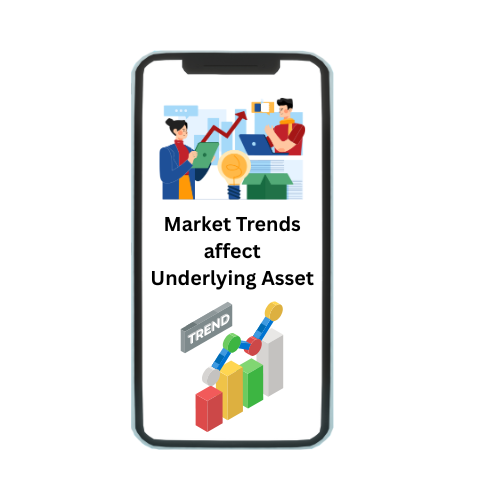Deficit spending is a fundamental concept in fiscal policy where a government intentionally spends more money than it collects in revenue during a specific period. This results in a budget deficit, which is often covered by borrowing funds. The rationale behind deficit spending varies but typically includes stimulating economic growth during downturns, funding social welfare programs, and addressing national emergencies. By injecting additional funds into the economy, deficit spending aims to boost consumer demand, create jobs, and support infrastructure development. However, it also raises concerns about increasing national debt levels and the long-term sustainability of government finances. Understanding deficit spending is crucial for comprehending how governments manage their economies and navigate economic challenges.
What Is Deficit Spending?
Deficit spending refers to a fiscal policy where a government spends more money than it collects in revenue over a specific period. This results in a budget deficit, which is typically financed through borrowing. The primary purpose of deficit spending is to stimulate economic activity, especially during periods of economic slowdown or recession. By injecting additional money into the economy through increased government expenditures, deficit spending aims to boost aggregate demand, create jobs, and support economic growth. It can also be used to fund essential social welfare programs and infrastructure projects. While deficit spending can provide short-term benefits by stimulating the economy, it also raises concerns about increasing government debt levels and future financial sustainability. As such, deficit spending is a tool used cautiously by governments to balance economic growth with fiscal responsibility.
What Causes a Deficit?
Several factors contribute to causing a deficit in government finances:
- Economic Stimulus Programs: During economic downturns, governments often implement stimulus programs to boost economic activity. These programs typically involve increased government spending on infrastructure projects, tax cuts, or direct payments to citizens. While these measures can help stimulate demand and economic growth, they also increase government expenditures, contributing to a deficit.
- Social Welfare Programs: Governments provide various social welfare benefits such as unemployment benefits, pensions, healthcare subsidies, and other social services. The costs associated with these programs can significantly add to government spending, especially if the benefits are universal or cover a large portion of the population.
- Tax Cuts: While tax cuts can stimulate economic growth by leaving more money in the hands of consumers and businesses, they also reduce government revenue. If spending levels are not adjusted to compensate for the reduced revenue, it can lead to a budget deficit.
- Recessionary Effects: During economic recessions, government revenue tends to decline due to lower tax collections from individuals and businesses. At the same time, demands on government services may increase, further straining the budget and potentially leading to a deficit.
- Defense and Security Spending: Government spending on defense and security, including military expenditures and homeland security, can be substantial. These expenditures are essential for national security but can contribute to deficits if not carefully managed.
- Interest Payments on Debt: Governments that have accumulated debt over time must make interest payments on that debt. These payments are a fixed expenditure and do not contribute to current economic growth, thereby adding to the deficit.
- Natural Disasters and Emergencies: Unexpected events such as natural disasters or global pandemics can require significant government spending on emergency response, disaster relief, and healthcare. These expenditures are necessary but can strain government finances and contribute to deficits.
Deficit Spending and the Multiplier Effect
Deficit spending is often associated with the multiplier effect, which is a key concept in economics. The multiplier effect occurs when an initial increase in government spending leads to a larger increase in economic output. Here’s how it works: When the government increases its spending, whether through infrastructure projects, social programs, or other initiatives, it injects money into the economy. This initial spending creates income for those who receive the government contracts or payments. These individuals and businesses, in turn, spend a portion of their income on goods and services, further stimulating demand. The businesses that receive this spending then have more income, which they also spend, continuing the cycle. This process results in a cumulative effect where the total increase in economic activity is greater than the initial amount spent by the government. The multiplier effect can vary based on the economy’s current condition and the type of spending. It is a key rationale behind deficit spending during economic downturns, as it aims to boost aggregate demand, create jobs, and support economic growth in a self-sustaining manner. However, it is essential to manage deficit spending carefully to ensure that the benefits outweigh the costs over the long term
Deficit vs. Debt?
Deficit and debt are two related but distinct concepts in government finances:
- Deficit: The deficit refers to the amount by which government expenditures exceed revenues in a single fiscal year. It is essentially the annual shortfall in the government’s budget. Deficits are typically financed through borrowing, such as issuing government bonds or treasury bills. The deficit represents the short-term financial situation of the government in terms of its annual budgetary balance.
- Debt: Government debt, on the other hand, is the total accumulation of deficits over time. It represents the cumulative amount of money that a government owes to creditors. When a government runs a deficit, it borrows money to cover the shortfall. This borrowing adds to the existing debt. Government debt can be held in the form of bonds, treasury bills, and other securities.
- Relationship: Deficits contribute to the accumulation of debt. If a government consistently runs deficits year after year, the debt will continue to grow. On the other hand, if a government runs a surplus (where revenues exceed expenditures), it can use the surplus to pay down existing debt.
- Long-term Implications: Deficits are short-term and can fluctuate from year to year depending on economic conditions and government policies. Debt, however, represents a longer-term obligation and is typically managed over a longer time horizon. High levels of debt relative to the size of the economy can have implications for future economic growth, interest rates, and fiscal stability.
- Uses: Deficits are used to finance government spending that exceeds current revenues, often to stimulate economic growth or support essential services. Debt represents the accumulated result of past deficits and is financed through ongoing borrowing and interest payments.
Social Insurance, Deficits, and Debt
Social insurance programs, such as Social Security and Medicare, play a significant role in government deficits and debt. These programs provide financial support and healthcare benefits to eligible individuals, funded through dedicated payroll taxes and, in some cases, general government revenues. The costs of these programs can contribute to government deficits when expenditures exceed the revenues collected from taxes. This imbalance is exacerbated by demographic shifts, such as aging populations, which increase the number of beneficiaries relative to the number of contributors. As deficits persist and accumulate, they add to the overall national debt. Social insurance programs are often considered mandatory expenditures, meaning that governments are legally obligated to fund them, regardless of the budgetary situation. This can create challenges for policymakers in balancing fiscal responsibility with the need to support social welfare and healthcare for their citizens. Managing the costs of social insurance programs is crucial for ensuring long-term fiscal sustainability and addressing the implications of deficits and rising national debt.
Conclusion
In conclusion, deficit spending is a powerful tool that governments use to manage economic cycles, stimulate growth, and provide essential services to their citizens. While deficit spending can be beneficial in the short term by boosting aggregate demand, creating jobs, and supporting economic recovery, it also carries risks. Persistent deficits can lead to a growing national debt, which may pose challenges to future economic stability and fiscal health. Therefore, it is crucial for governments to balance deficit spending with sustainable fiscal policies, ensuring that investments contribute to long-term economic growth and that debts are managed responsibly. By carefully monitoring spending, maintaining revenue streams, and making strategic investments, governments can harness deficit spending as part of a broader strategy to achieve economic prosperity while safeguarding the financial well-being of current and future generations.
Frequently Asked Questions(FAQs)
Governments engage in deficit spending to stimulate economic growth, support social welfare programs, and respond to crises like recessions.
Deficit spending is typically financed through borrowing via issuing government bonds and securities.
Potential benefits include economic stimulus, job creation, and investment in infrastructure and public services.



